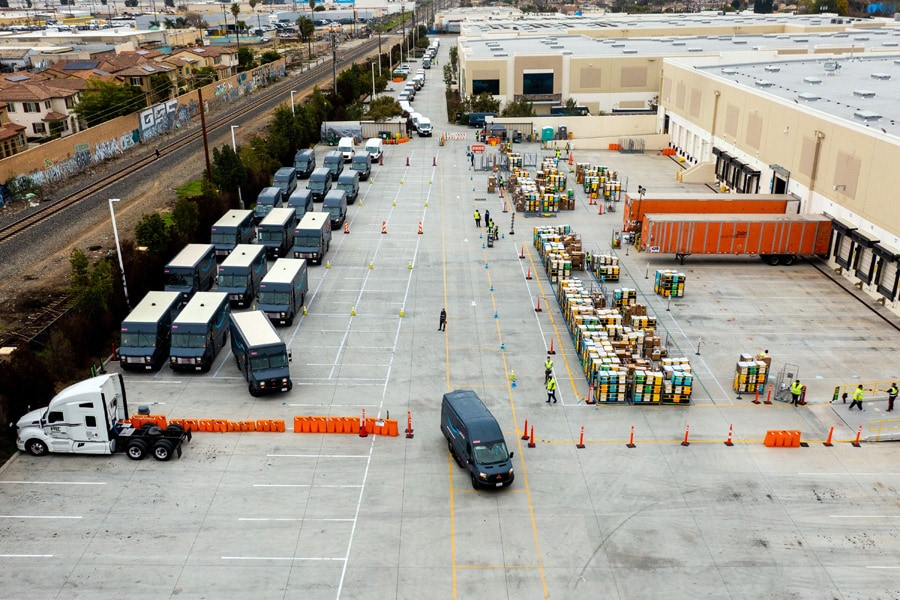
Can anyone satisfy Amazon's craving for electric vans?
Amazon has an insatiable appetite for electric vans, thanks to a ballooning logistics operation and a pledge that half of its deliveries will be carbon-neutral by 2030
 Amazon delivery vans leave a shipping facility in Rosemead, Calif., on Jan. 13, 2022. The company has big plans to turn its delivery fleet green, but very few of the vehicles are made right now. (Roger Kisby/The New York Times)
Amazon delivery vans leave a shipping facility in Rosemead, Calif., on Jan. 13, 2022. The company has big plans to turn its delivery fleet green, but very few of the vehicles are made right now. (Roger Kisby/The New York Times)
In the fall, Jeff Bezos tweeted praise for Rivian, a startup under contract to make 100,000 electric delivery vans for Amazon, and its founder, R.J. Scaringe, calling him “one of the greatest entrepreneurs I’ve ever met.”
Then, Bezos worked in a jab: “Now, RJ, where are our vans?!”
The comment may have been in jest, but the problem he raised is a serious one.
Amazon has an insatiable appetite for electric vans, thanks to a ballooning logistics operation and a pledge that half of its deliveries will be carbon-neutral by 2030. But that hunger is running into the reality that the auto industry barely produces any of the vehicles yet.
While consumer electric cars are finally hitting their stride — Tesla delivered almost 1 million cars last year — the market for commercial electric vehicles is still nascent, with their heavier loads multiplying the technology challenges. Amazon would not say if Rivian delivered the first 10 production vans in December, as was expected, and other automakers are not manufacturing at scale yet, either.
©2019 New York Times News Service







